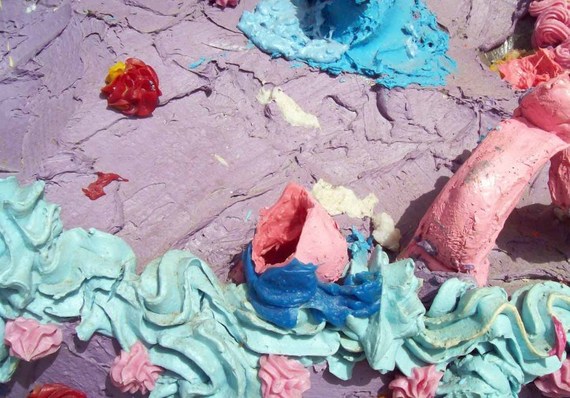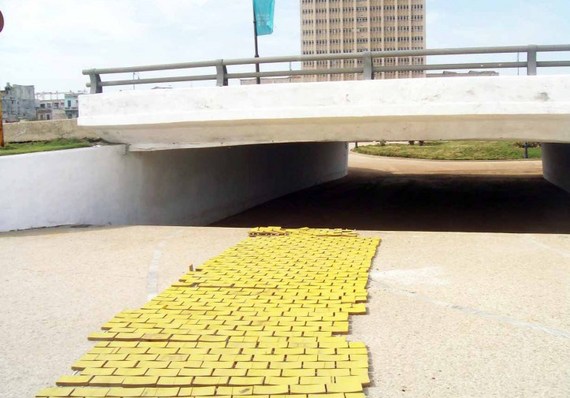The irony of the 12th Habana Biennial lies in the fact that although it drew locals closer to art, it did so in a rather literal way. I am saying this because some people ends up 'vandalising' the artworks during the time of the exhibition using them as sources for building materials such as plastic and wooden panels. This raises a series of questions whether conceptual art can be exhibited on the streets in societies where most of the people do not have their basic needs satisfied.
Vandalising bronze sculptures has become pandemic in cities like Buenos Aires or Sao Paolo, mostly, after the price of that metal soared. The Cuban problem, however, not only has to do with the material needs of the audience but also with the biennial's artistic criteria. I am saying this because the condition for (un-beautiful) 'ready mades' to be considered as art depends on the fact that the performance of viewing it happens inside the artistic institution and in front of an art audience able and willing to recognise the object exhibited as art. In other words, while a brick in a museum might possibly be a seminal minimalist piece by Carl Andre, the same kind of brick left on the street might be the building material that those in need require to improve their living conditions.
Although art's function lies in its lack of functionality, Cuban viewers might think otherwise. In fact, after a month-long exhibition, the streets ended up covered with debris instead of art works because at some point the 'audience' decided to stop considering it as art. Jose Sierra, a curator of part of the exhibition at the city's Malecón said:
'At first, people looked at the art. Some of them even ventured to touch it, especially the kids. A considerable number of police officers initially kept an eye on the art works but as the days went by the situation deteriorated (...) mainly due to the copious rain and, most importantly, to those who identified the art as a source of cheap materials. They took whatever they thought they could re-use in their homes such as nails, wood planks and aluminium. At a point, the pillage was such that the police were left with no choice bu looking at the vandals in disbelief without doing anything. In fact, a couple of days ago I saw two men working on disassembling Lina Leal's Secreter as if they were in their own garage'.
A guard called Moraima Cobas, said: 'I heard a man, yesterday, saying that people stole fragments from an art work that represents a massive birthday cake made of layers of polychrome plastic materials only to cut those fragments into smaller pieces to make their own jewellery. The 150 pesos (6 dollars) a month we are paid to keep the place safe does not compensate for all the effort we have had to put into preventing people from pillaging the art. Everybody wants to steal. We need to be so vigilant in our daily lives. It is part of our culture'.
For days, those who visited the biennial could overhear some viewers referring to the art works as an eventual source for materials once the exhibition was over on June 22nd. That is why it did not come as a surprise when during the 21st queues of people emerged with carts and boxes waiting to pick up what otherwise would have been thrown away. J A T


